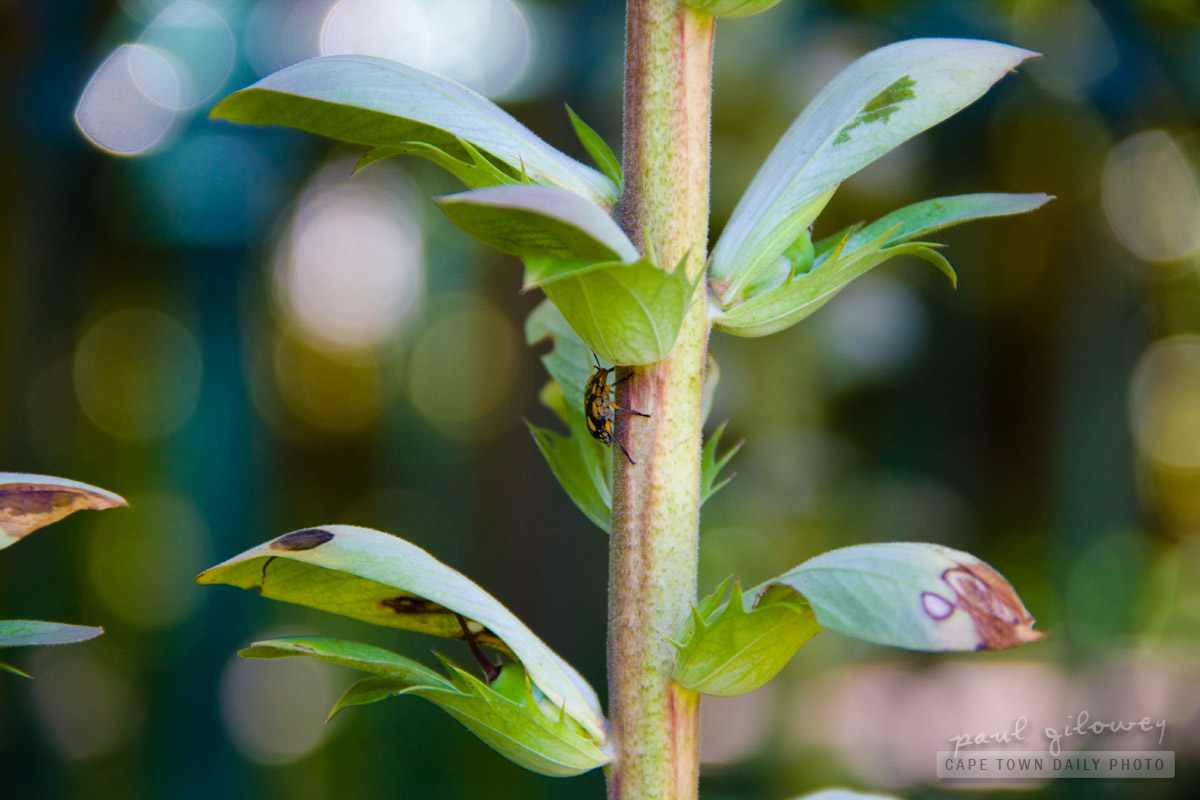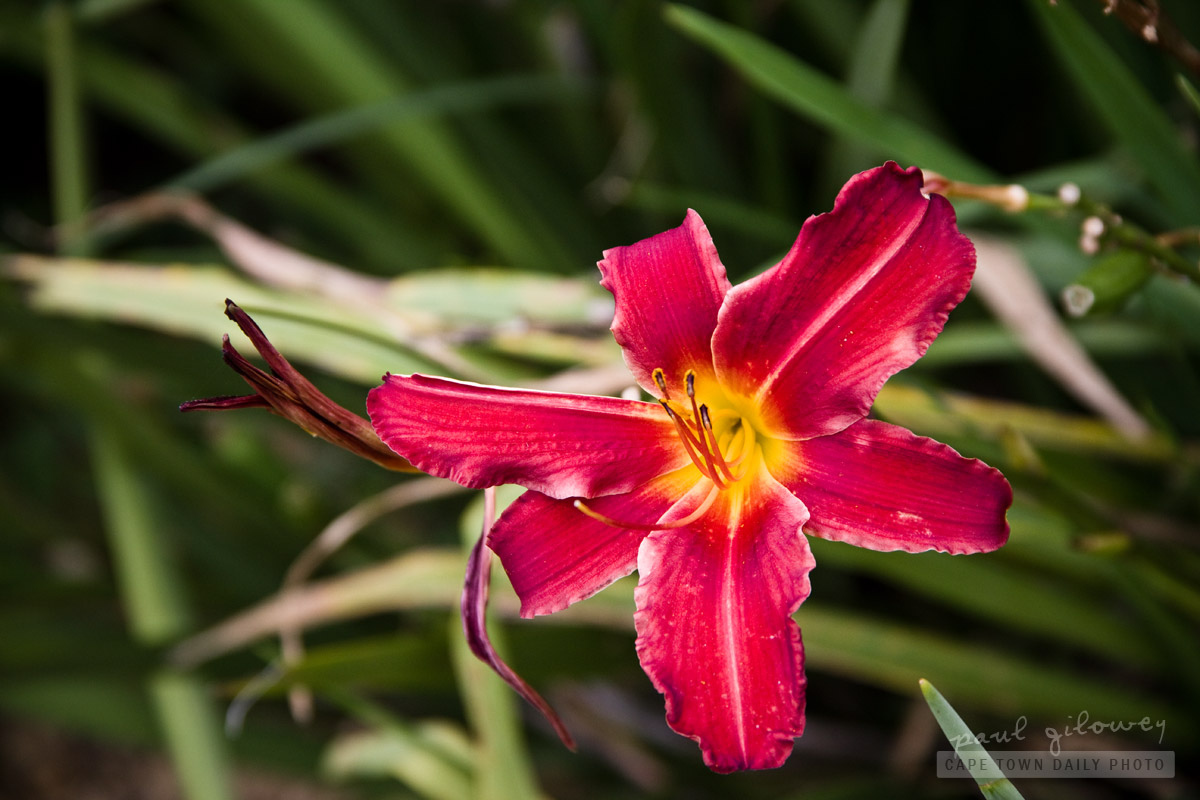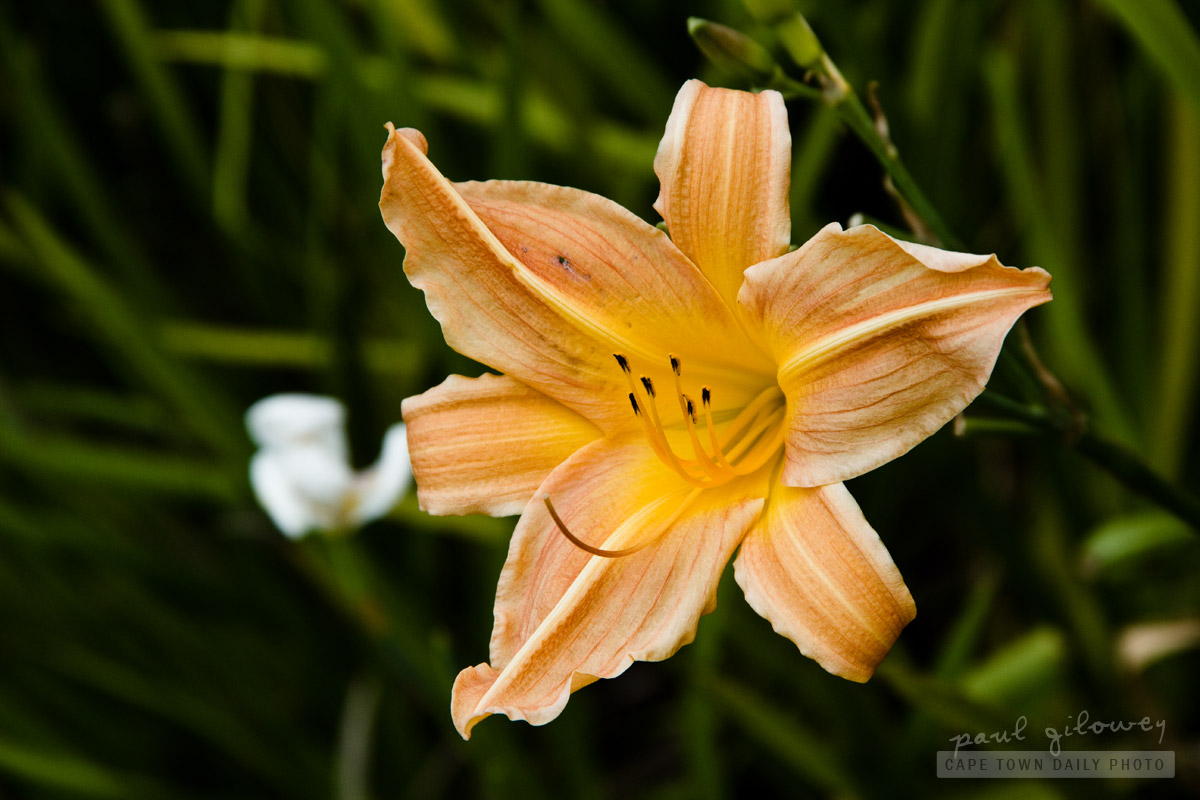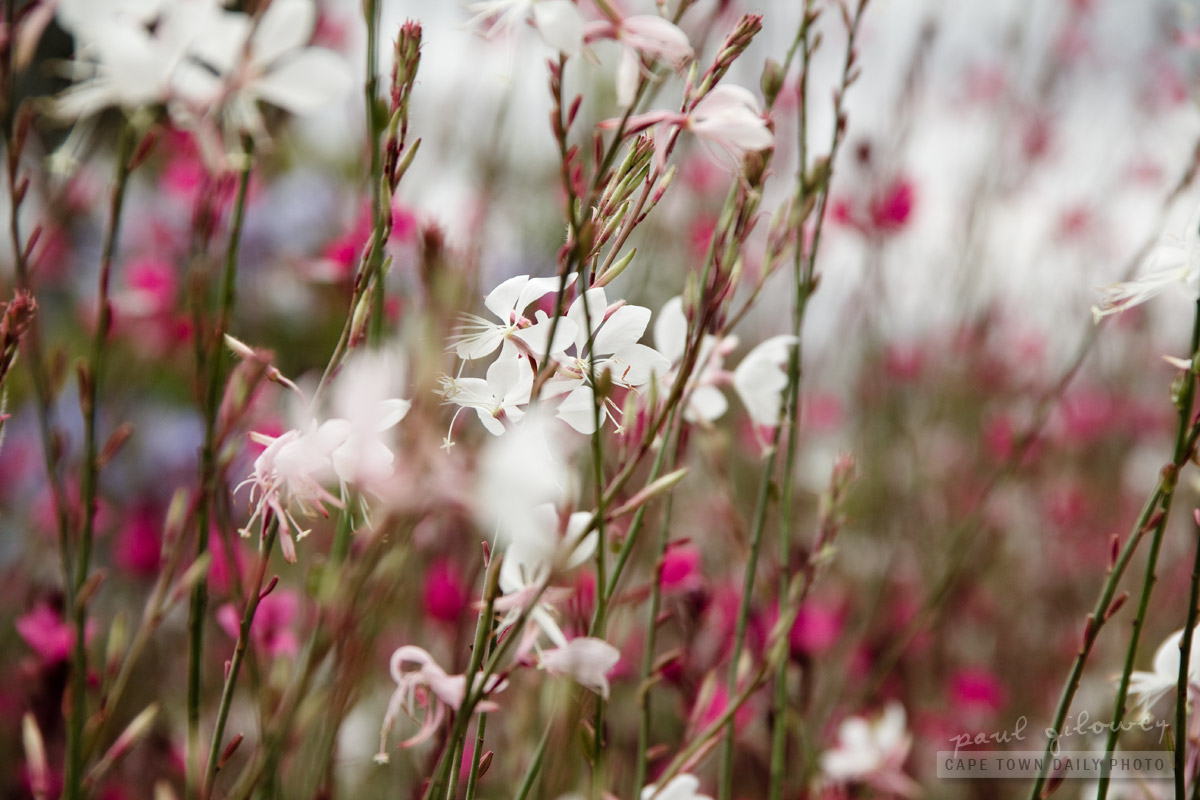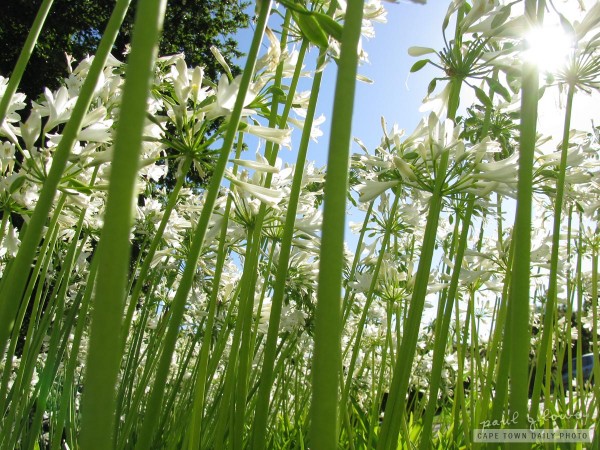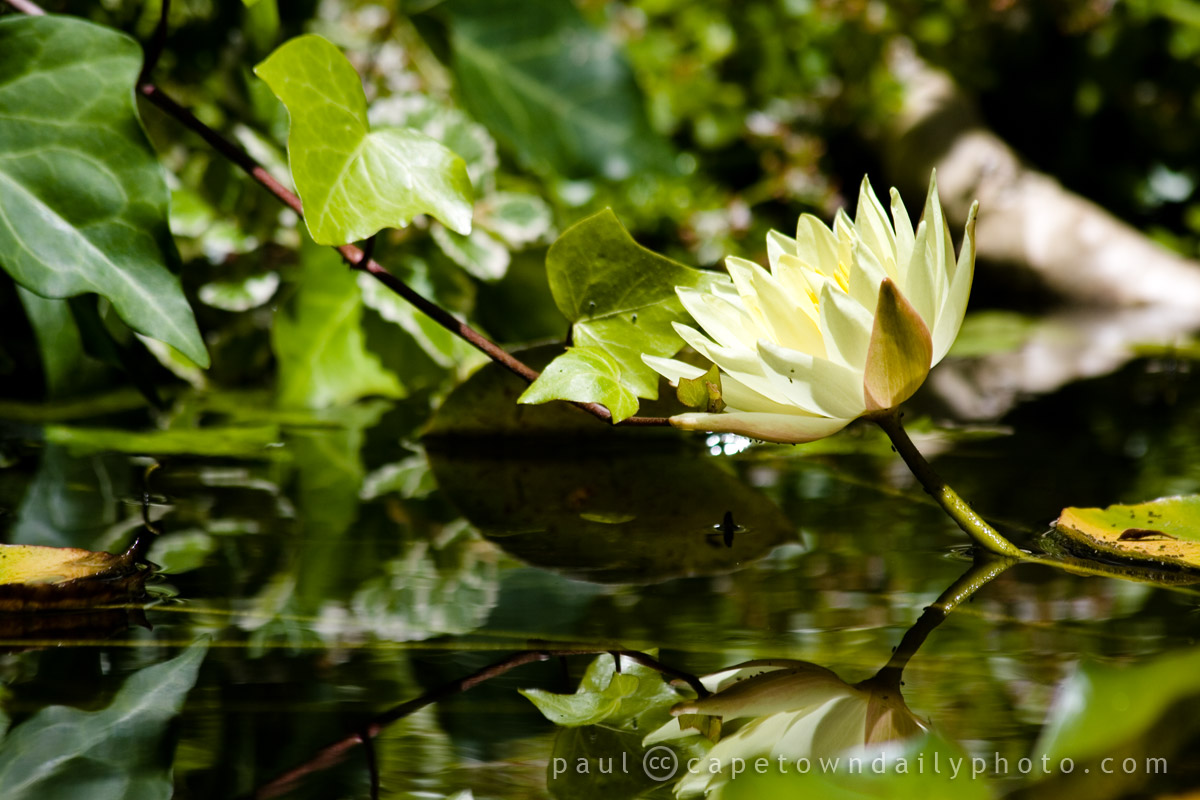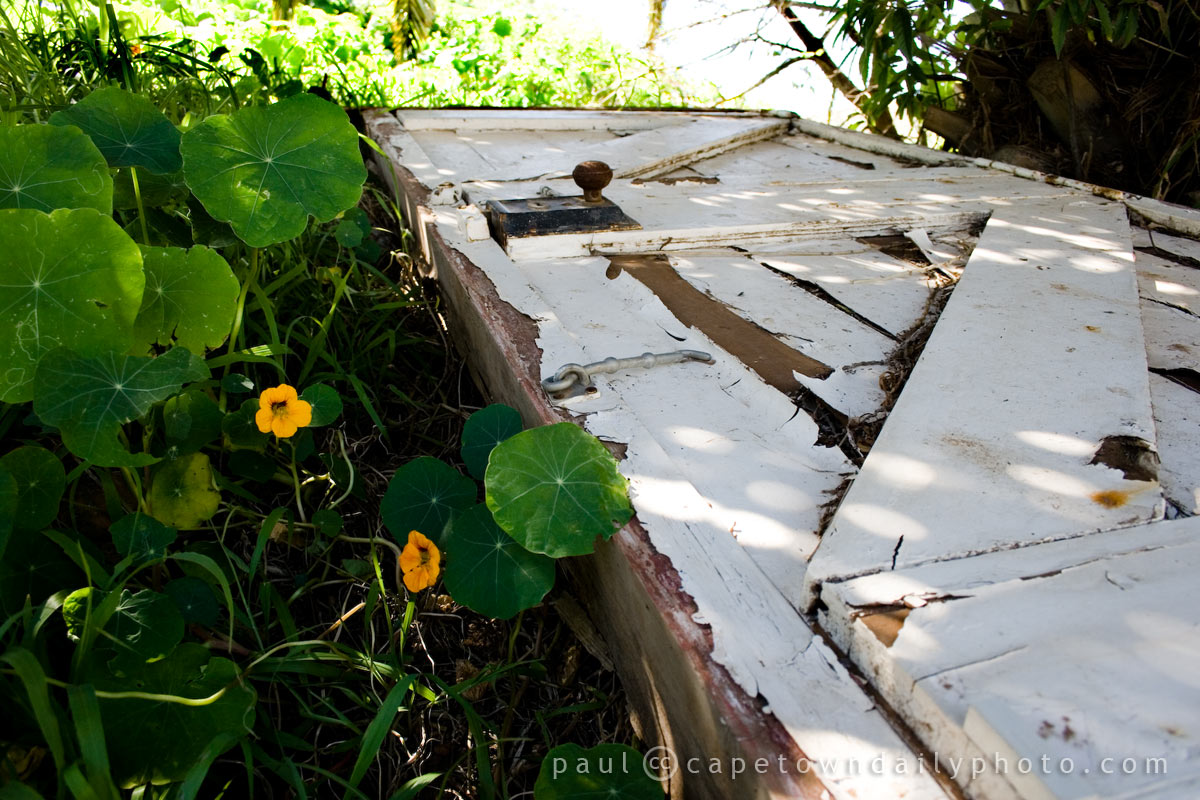Tag Archives: flora
A yellow African Marigold
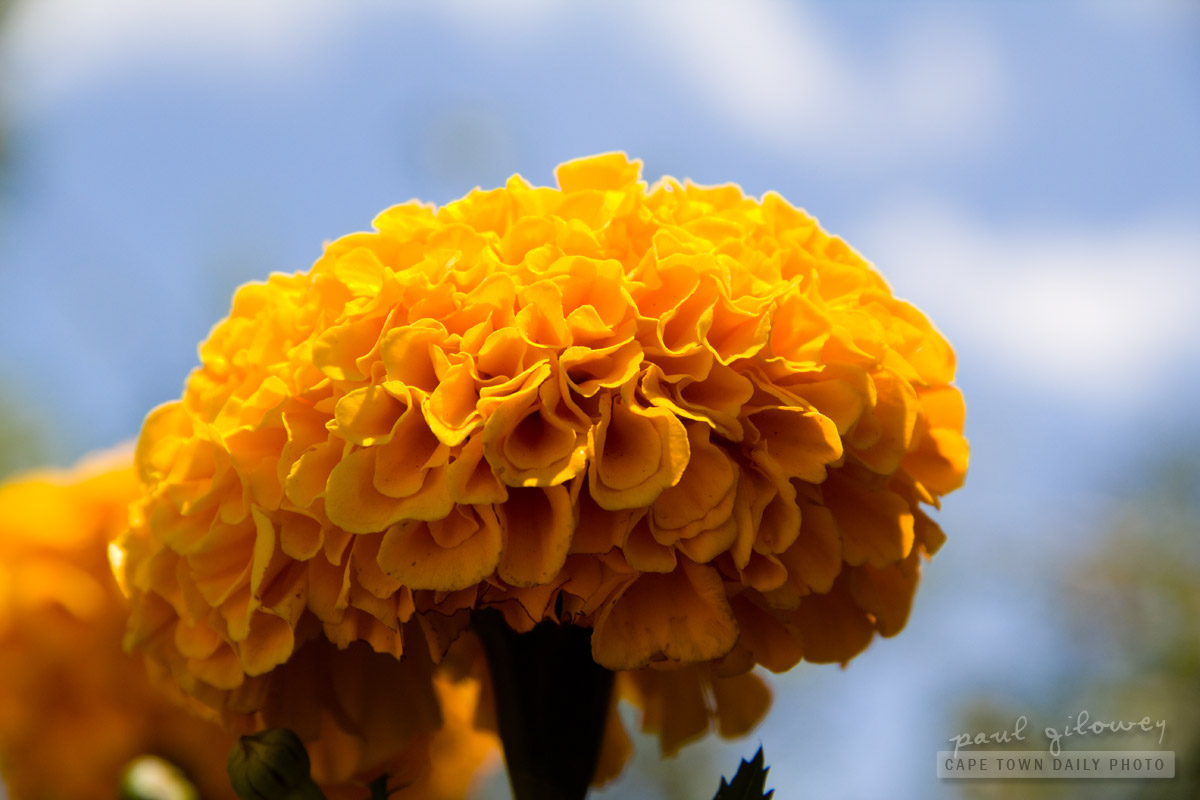
Isn't she pretty?
Not a tree to tangle with
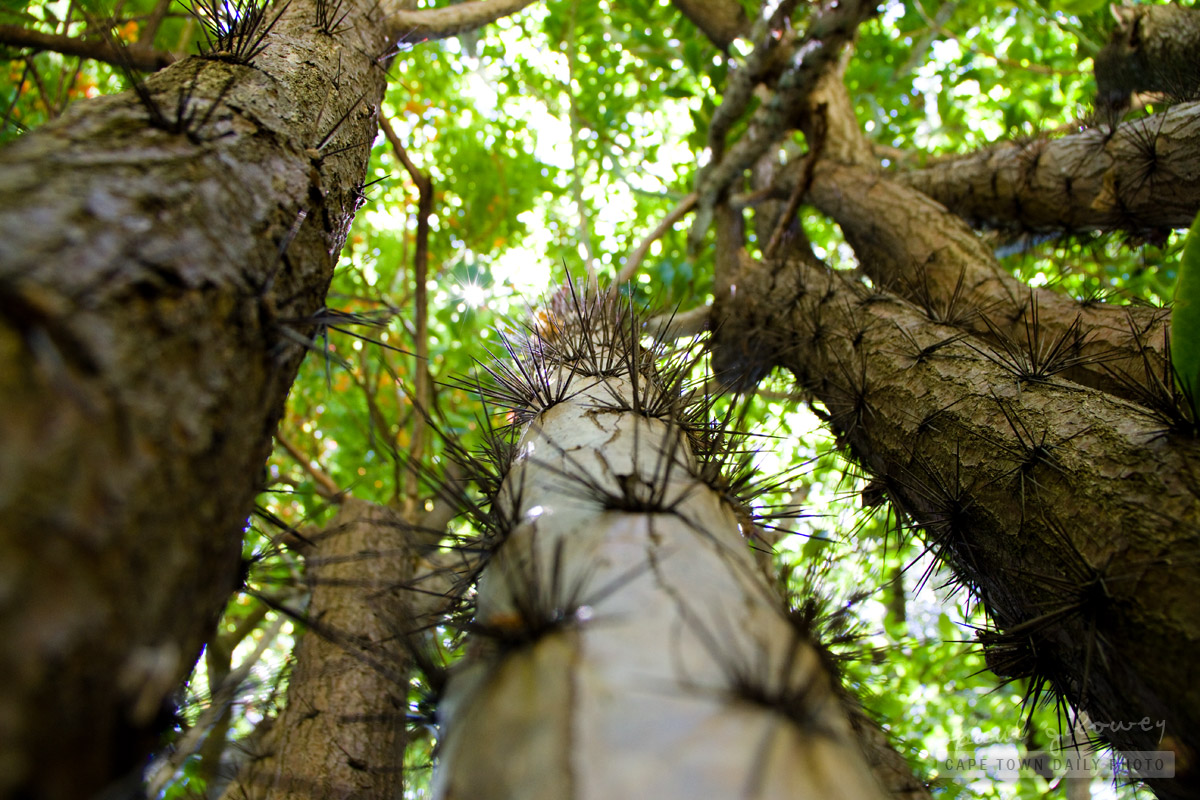
Speaking of deterrents... while in the Kruger National Park our guide pointed out a bush that defends itself from buck by releasing a bad-tasting chemical into its leaves if senses that too many have been eaten. The chemical is also released into the air (which in turn starts a chain reaction in neighbouring bushes, which in turn release the chemical into their leaves. Sneaky isn't it?
Squirrel in the garden

I found little Egbert (his mom named him after King Egbert of Wessex, I believe), scurrying between trees looking for the best acorn nuts. He, naturally, dashed up the side of a large oak tree as soon as I approached to get a better look. I think he thought I was trying to follow him to his secret stash. I wasn't.
The place where I found Egbert is a small park in Cape Town, over the road from the well-known Rafikis restaurant and bar in Kloof Nek road (map). The little park has two or three large oak trees and is surrounded by a beautiful chest-high fence. It has a few swings, a seesaw, and a climbing gym for kids. It even has a couple of benches where parents can rest while kids work off their excess energy.
It's a lovely little park and worth popping in to if you're in the area.
The thirsty hydrangea

We had a few at out previous home, and even though their large leaves were kept out of the direct sun it seemed as though I could never water them enough! They ultimately passed away - it was sad. :(
A daylily called Russian Rhapsody
The Moonbeam Daylily
Pink ‘n white blowing in the wind
Not an Arum and not a Lily
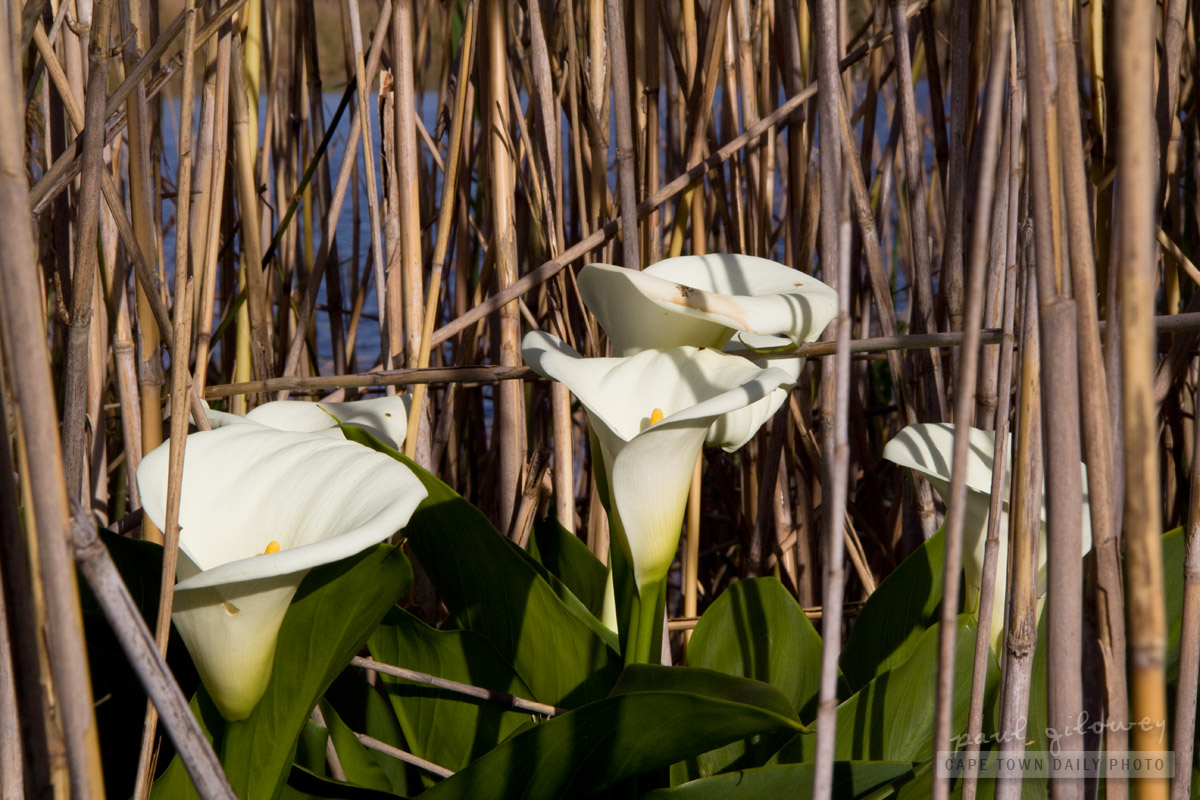
An amusing fact that I discovered was that the Arum Lily is called a Varkoor (translated as Pig's Ear) in Afrikaans. Could the English and Afrikaans names have more contrasting meaning?! Purity, elegance, and a pig's ear. :)
Champion Trees
Our government's department of agriculture, forestry and fisheries published a government notice last month that contains a list of proposed Champion Trees - trees that will be given special protection under country law.
The trees mostly have some kind historic or cultural value, or in other cases are simply so old, large, or remarkable that they deserve being protected from casual removal, or irresponsible felling.
Read the notice and if you believe that a particular tree that you know of should be protected then do your civic duty and contact the department to let them know. There's a little more than 30 days left to comment on the proposed list!
Protea silhouette
Proteas dusted with sherbet
Green ponds and lilypads

This is the little pond that leads into the small wild-flower garden. The actual flower reserve stretches out far beyond the formal garden, but we decided that since it looked as though it could rain any minute that we'd stick around in the garden - not too far away from the shelter of our car. :)
Isn't the reflection on the water beautiful, and isn't this the perfect vista just waiting to be painted in watercolours?
Unusual protea flowers
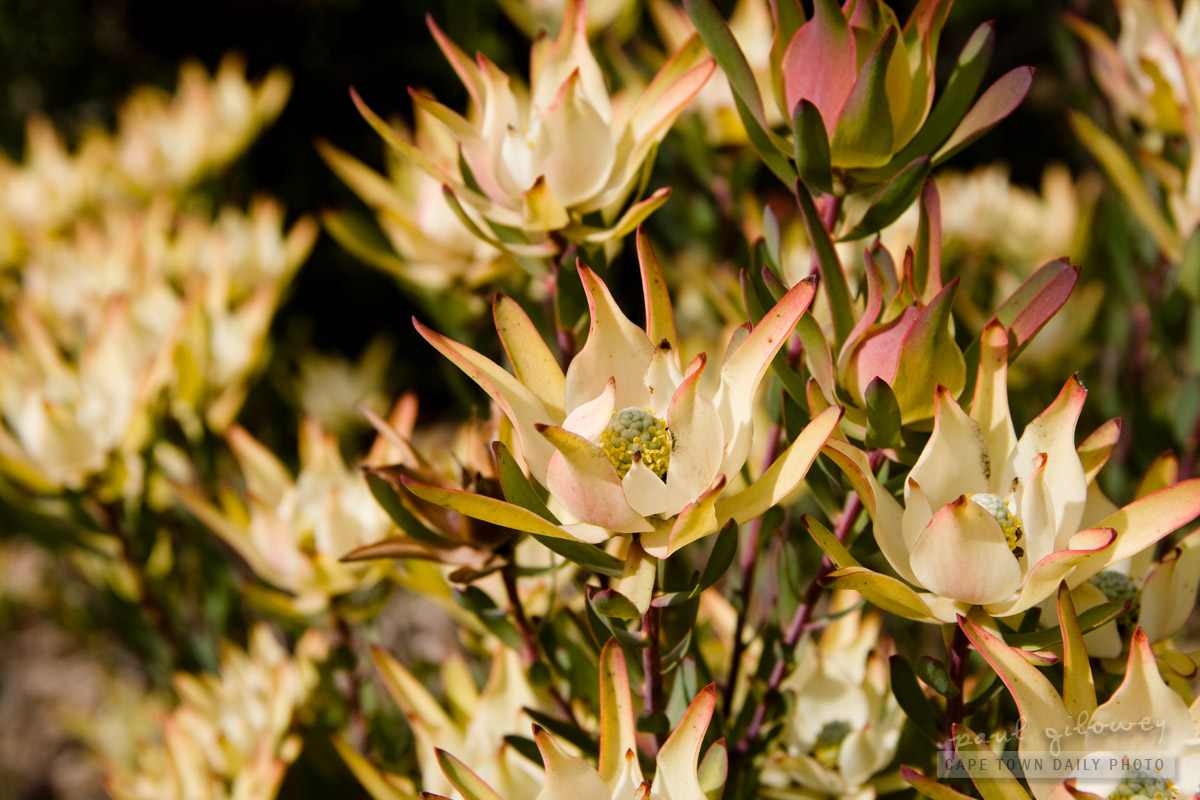
Based mostly on the plant's leaves I believe today's photo is also of a protea - although I'd say that it's a slightly unusual variety (in my non-horticultural opinion). I love proteas for two reasons - the first is that they're such hardy plants (they survive with extremely little water, and seem to flourish just perfectly in our sandy soil). The other reason is that there are so many varieties and so many different flowers that one could have the most awesome garden made up only of proteas. Do a Google image search for the words "protea flower". I think you'll be surprised at how many different type there are.
Spring blossoms
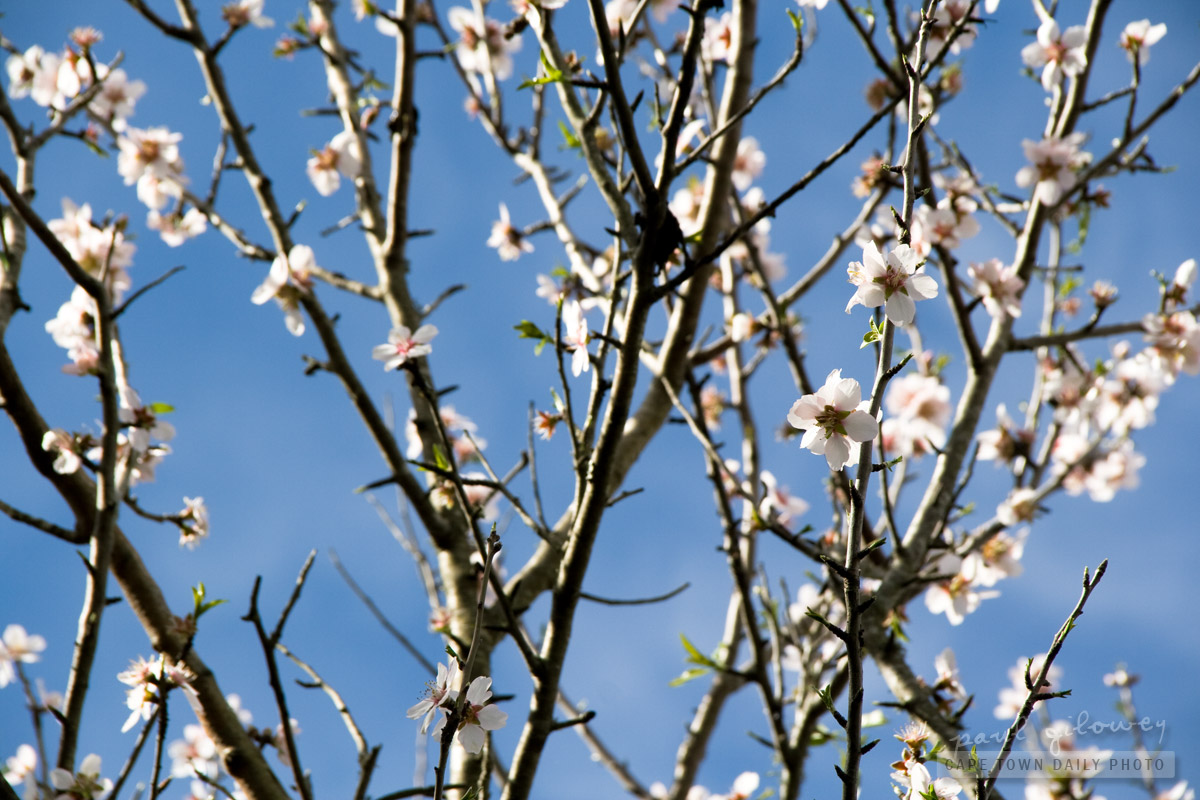
The subject in the photo above is a small tree that stood about four or five meters high. The tree had very few leaves but was covered in the little pink blossoms that you can see in the photo. I have no idea, but do you perhaps know what kind of tree it may be? Please leave a comment below if you do!
A worn-out aloe
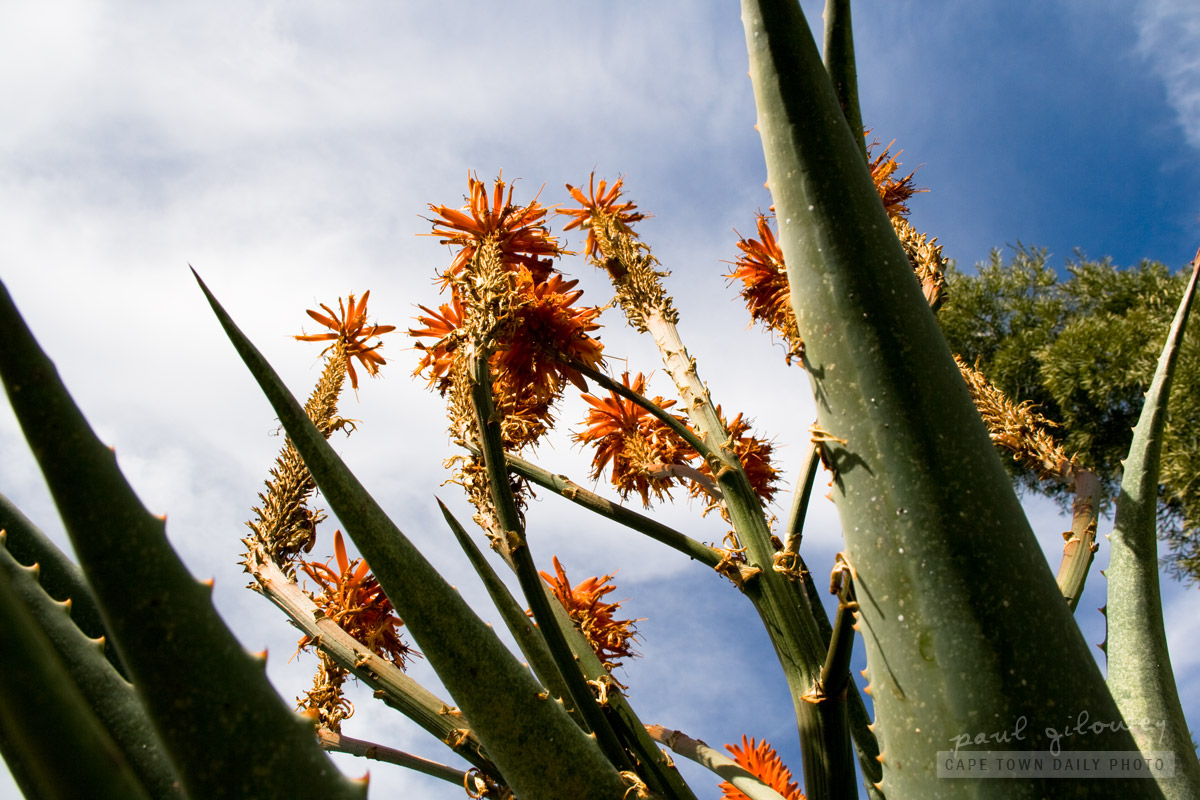
You wouldn't say that spring is still to come, now would you?
A cactus family
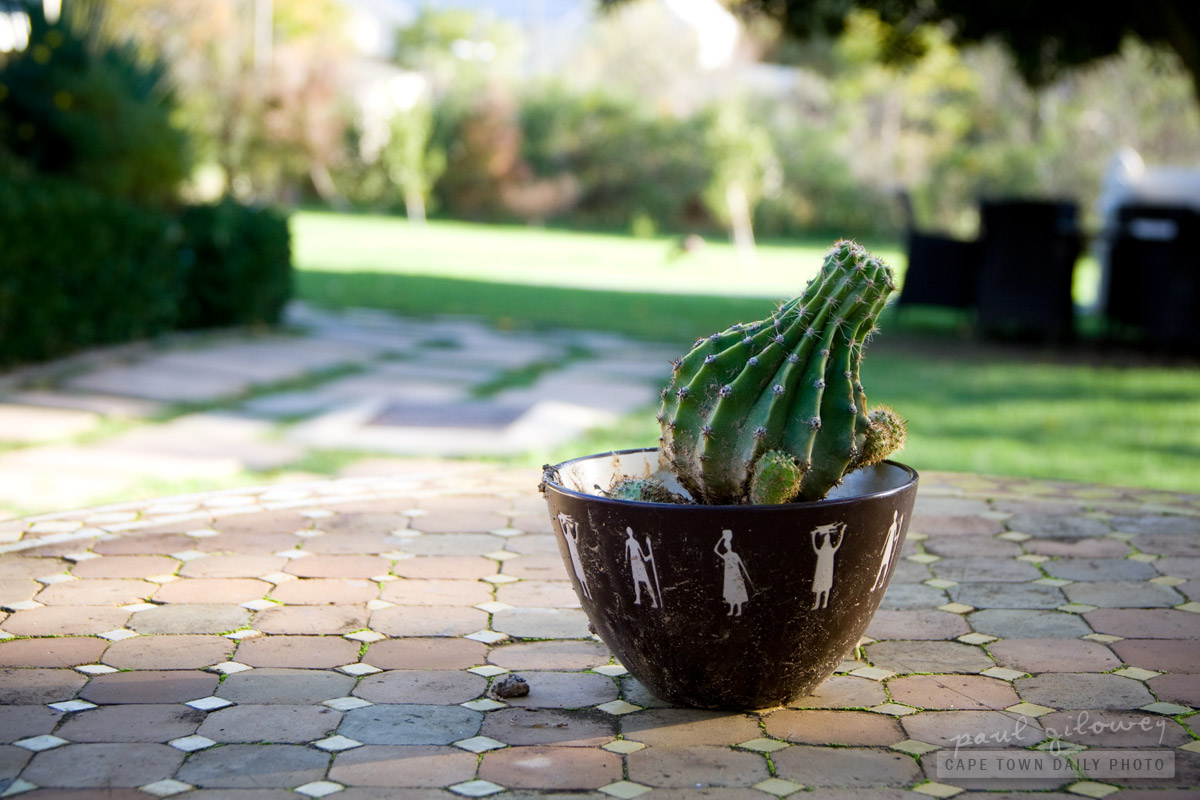
According to the South African Cactus Pear Growers Association cacti were once used as a barrier to protect crops from wild animals. Perhaps we could replace our high fences and security gates with a few cactus plants? What do you think? ;)
Orange Aloe flowers

Today you'll find many after-sun lotions, anti-eczema creams, etc. in South Africa (and perhaps even in your country) referring to Aloe as a primary ingredient.
Possible medicinal benefits aside - isn't this just a beautiful cluster of flowers?
Strelitzia, the bird-flower
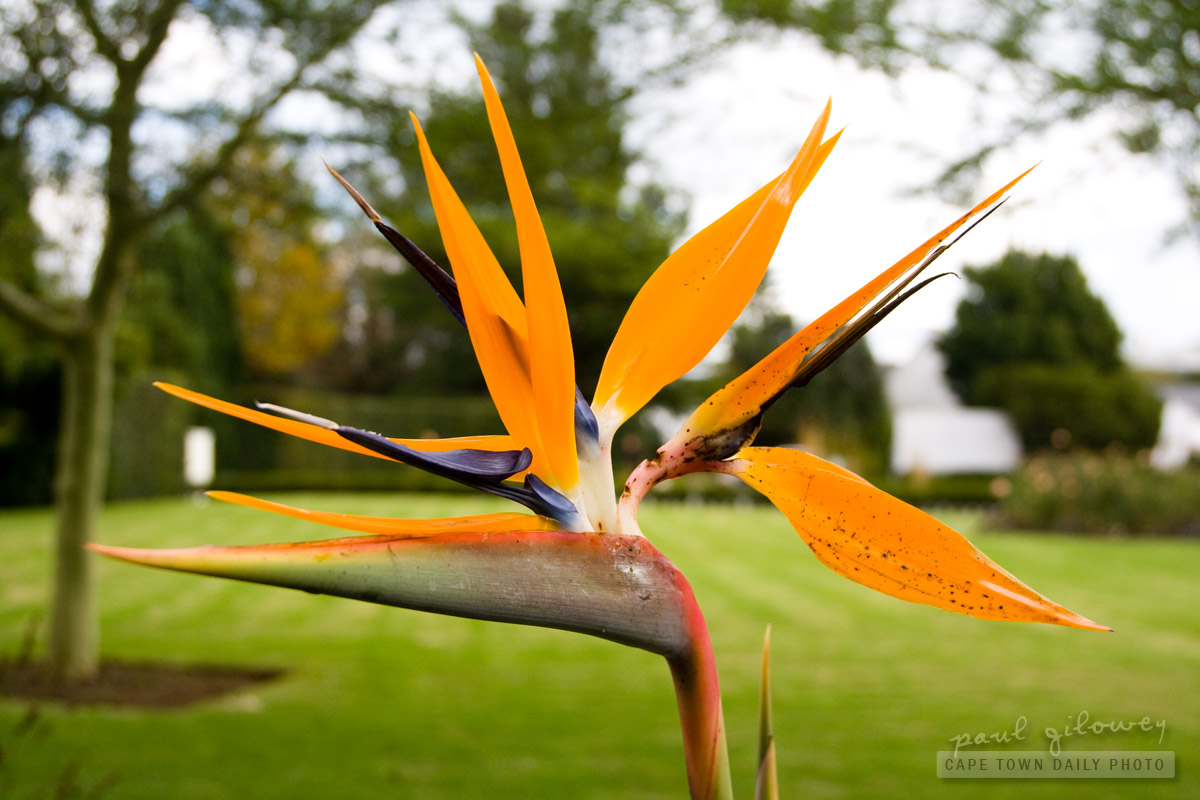
The Strelitzia Reginae is indigenous to South Africa - and in fact, although this isn't ours, we do have one in our garden. The foliage of this plant is evergreen and the large leaves are shaped a little like those of a banana tree - only smaller.
An interesting piece of trivia, that may help you out in a game-show some day, is that (according to Wikipedia) the Strelitzia is named after Charlotte of Mecklenburg-Strelitz, the wife of King George III - although, I believe the flower is somewhat prettier than the painting of the queen shows her to have been. :-o
Tulips in May
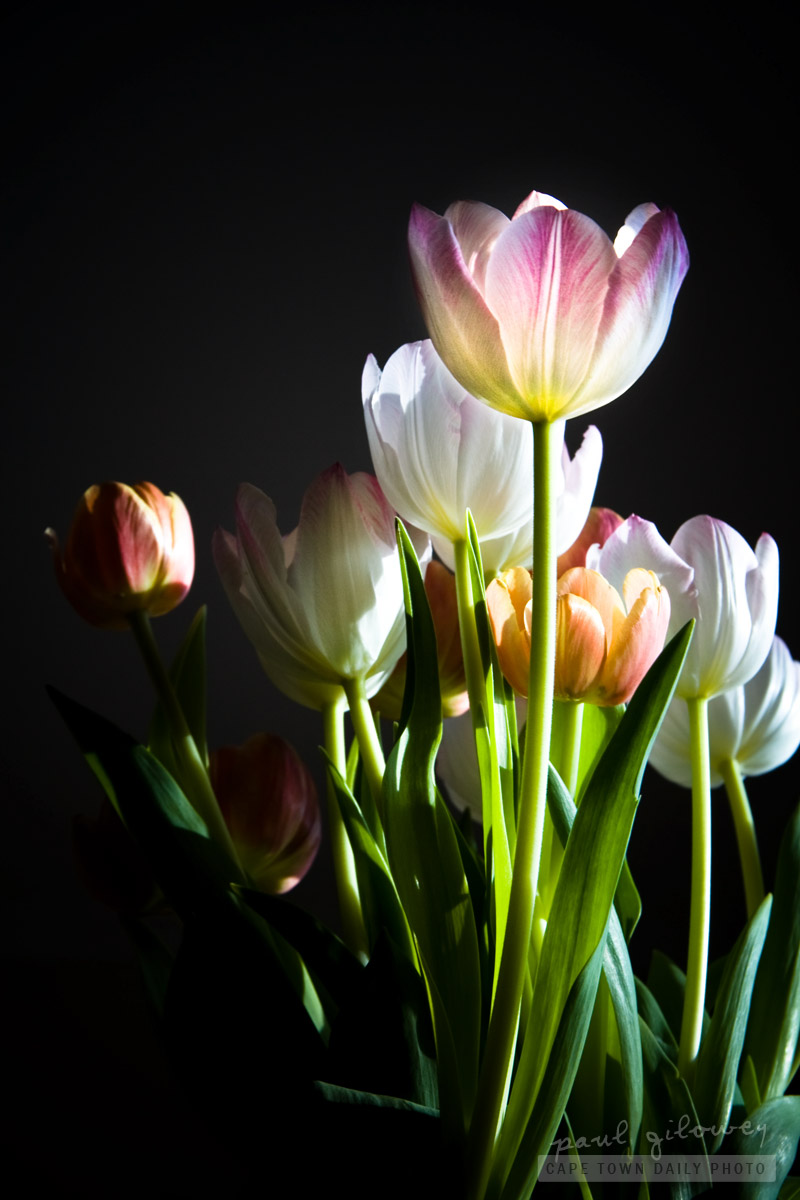
Tulips are perennial bulbs, which means that they flower each year. Although often associated with the Netherlands, according to gardeningeden.co.za, they originate from the Turkish Himalayas.
Even though there are many varieties of tulips, due to our warmish winters and short spring it's only really the Darwin Hybrid that's easy to grow in South Africa. Visit gardeningeden.co.za for information on where and when to plant tulips and how to make sure they survive our slightly-tulip-hostile weather.
Even though I liked the main photo most, I thought that you may appreciate a few more photos of these lovely flowers. Click on the thumbnails below to see the the photos.
How to kill a dune
We've probably all heard about dune conservation, but perhaps we haven't all understood why it's important to conserve dunes. Dunes are our shore's first line of defence against the destruction caused by storms and unusually high tides. Acting as a long barrier, they reduce the chance of flooding, and in the case of severe storms, help to delay flooding. Dunes also help contain the beach sand and salty water spray from being blown inland, thereby protecting vegetation from dying due to excessive soil salinity, and preventing beaches from extending too far inland.
I'd never realised how fragile dunes were before reading this article on dune protection! Beach grass, shown in this photo, is the scaffolding used to build dunes. The grass grows, more sand is deposited, the grass grows above the sand, more sand is deposited, and the cycle continues until we have huge dunes to protect our shoreline.
The beach grass shown in this photo is extremely resilient to the elements. Like a true champ it resists drought conditions, tolerates very high levels of salt in the sand, and flourishes in very infertile soil. However, even though the grass in this photo is extremely hardy, its brittle inner core is extremely vulnerable when stepped on. Even a single person taking a shortcut across a dune kills grass on which they stand. A few people taking a shortcut across a dune will kill enough grass to cause the dune to be eroded by the wind.
Visit this site and follow the links to see the illustrations of how easily dunes erode when people trample the grass. I don't think I'll ever walk over a dune again, except by using the designated paths or bridges.
Bunny Tails
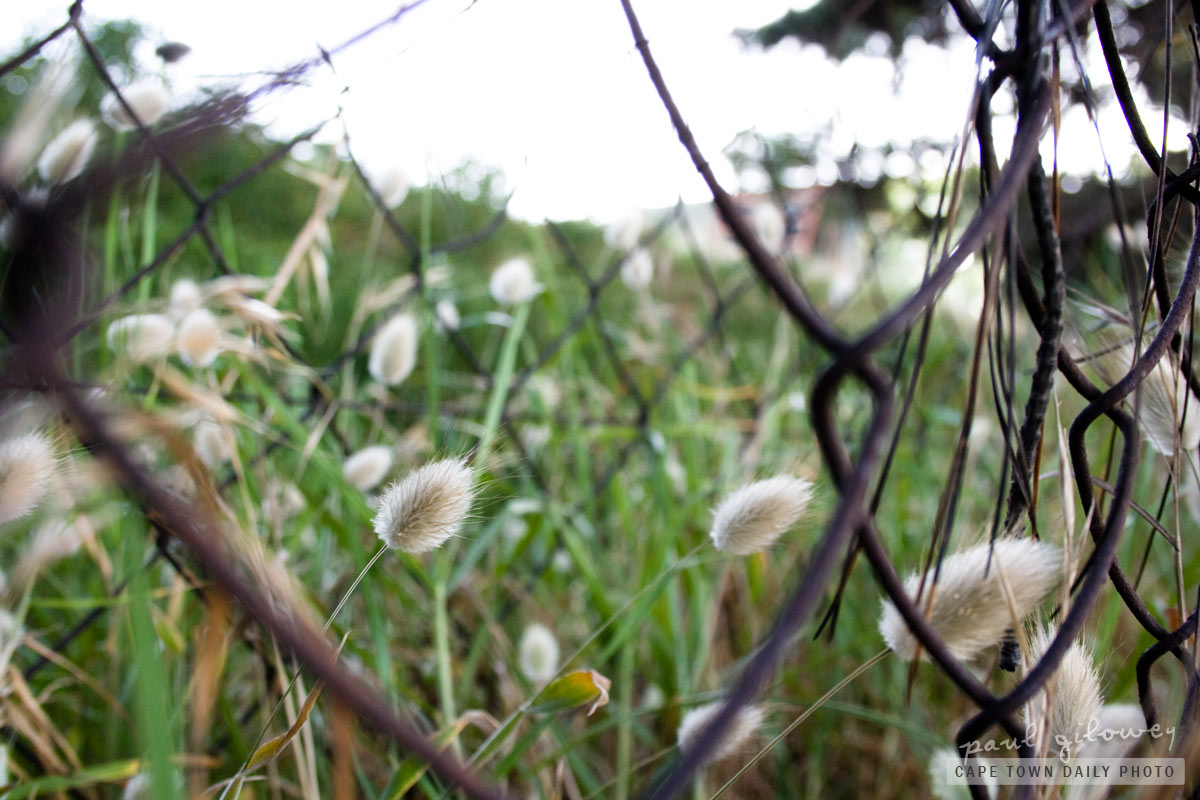
Even though they may make serve as great ornaments, don't you think they look better in the wild?
Dandelion-dreaming
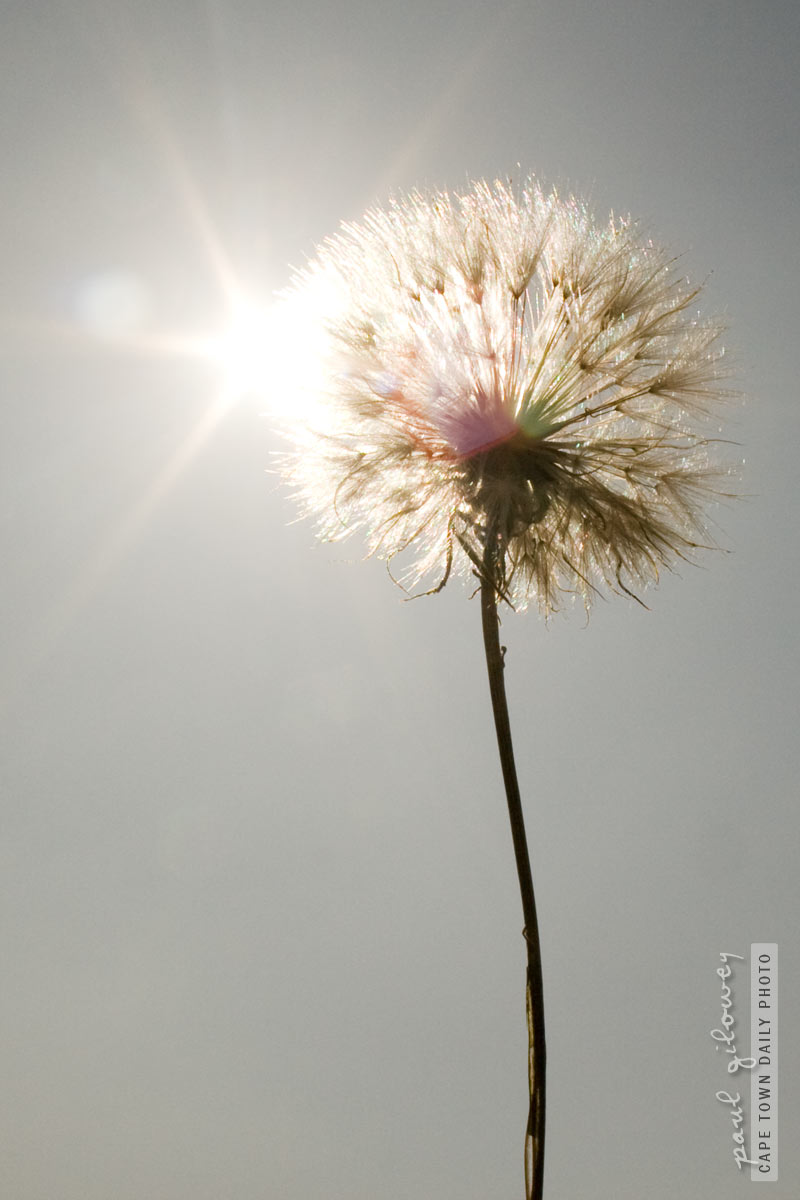
We have so many of these spring up in our gardens that our first instinct is to rip them out without a second thought. It's strange though how differently we respond to them in fields. In fields they're beautiful. We pick them and admire their delicate construction. They make us feel nostalgic. We blow on them to see the seeds take to the air in the most relaxing manner. We marvel at these perfectly-crafted seed-distributing machines.
Isn't our love/hate relationship to these plants so very strange?
Pretty fluffy white weeds
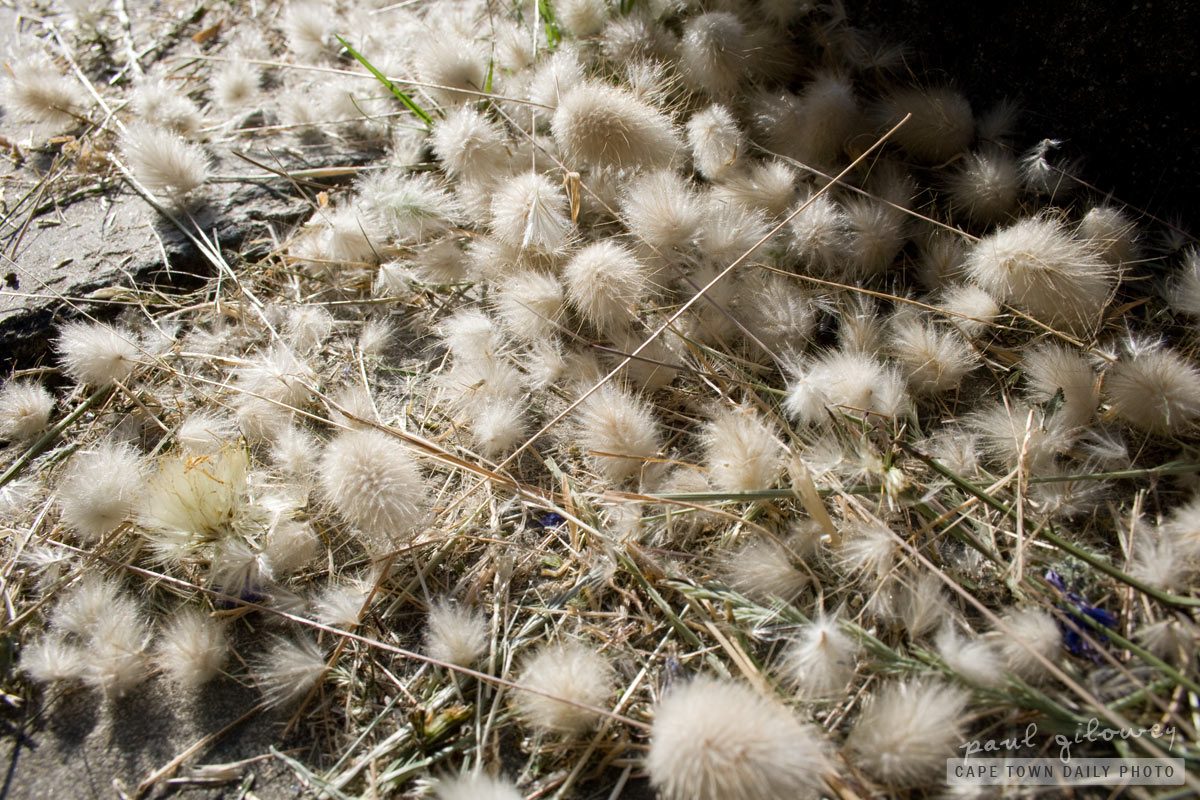
These particular weeds are extremely prolific in our area. I googled for a while to learn their name - but alas, couldn't find anything that looked similar except, of course, for the Hairy Fleabane, which is also fluffy and white, but also quite different.
Do you perhaps know this weed's name?
White agapanthus at Spier
Kerry-Anne bought a voucher for a two night stay at Spier though Twangoo - but before I get into the Spier experience, I'd like to share these photos of the rare white agapanthus that are grown, almost prolifically, on the estate. So, today's post has more photos, and fewer words. :)
Click on the three below to see the larger versions. Aren't these plants just beautiful?
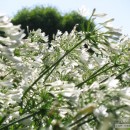 |
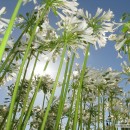 |
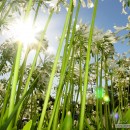 |
Flower, sea, island

I discovered that that contrary to my previous belief, this is just not true. One of my very own friends had never been to the top! So, even though it was windy as hell (not that I'd know how windy hell may be) I decided that while we were in the city I'd take her on her first trip to the lookout point.
This is one of the photos that I shot while at the lookout point. I'm not sure what plant this is - but isn't it pretty? The wind was blowing furiously and that's how I got that cool, more-or-less-in-focus effect on some branches while others are partially, or completely blurred.
The ocean that you're able to see in the background is the Atlantic ocean that fills Table Bay; and the island that you see out in the distance is the famous Robben Island - South Africa's own version of Alcatraz Island
The King Protea, South Africa’s national flower
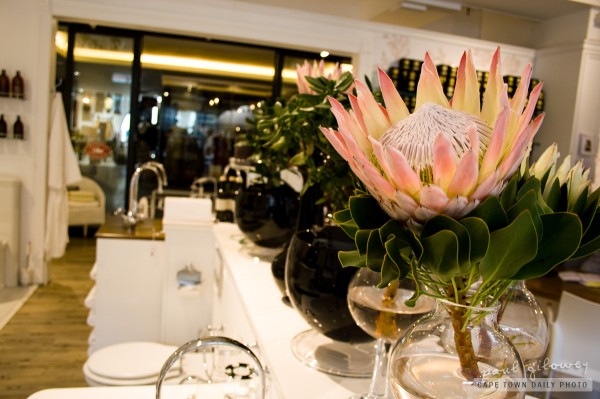
An interesting fact is that the King Protea isn't only grown for export in South Africa, but also in New Zealand, Australia and even Hawaii! If you're interested in reading more about Proteas - or in fact about South African flora in general - visit the PlantZAfrica website. The site's pretty dated, but if you'd excuse it's '90s design there's plenty of information that you may find very useful. :)
World wide weed
Don't you wish that flowers would grow more like weeds? We wouldn't ever have to water the beds or feed the flowers. Until I discovered my awesome weed-popper (which makes weeding more like a game) I really think I may have had more weeds than grass.
The Hairy Fleabane, shown in this photo, is a very common variety in Cape Town. The long stems and furry heads can be seen covering many people's lawns in spring, making them look more like country fields - which I guess for some has its own appeal. :)
The interesting thing is that according to weedsience.org there's a particular strain of Hairy Fleabane in the Breede Valley that has become resistant to herbicide. So it would seem to me that the only real solution is in fact my awesome weed-popper. Perhaps I should go into the weed-popper business. :)
Nymphaea what?
The flower above is commonly known as a water lily, but to the botanists among you it's more likely known as a member of the Nymphaeaceae family, possibly either the Nymphaea Alba (White Water Lily) or the Nymphaea Capensis (Cape Blue Water Lily). What makes it difficult for me to decide is that the only references I've found so far to water lilies in the Western Cape talk about the Capensis, and yet this flower looks yellowish - a lot like the Alba. But the Alba is apparently found in the northern hemisphere, in places like England and North America.
That aside, I discovered an online store that sells what appears to be dried Nymphaea Alba. One can apparently use the dried flower to make a tea that, according to them, has the following effect: "White Lotus is both narcotic and euphoric. Like Blue Lotus, the plant is said to increase sexual arousal and enjoyment."
Now, while the name Nymphaea appears to support this, I'm keen for someone to (at their own risk ;) ) get some and give it a go. If you have tried the tea, then please do leave a comment below and let us know if you experienced any effects!
A big white door
Often when I see an old object like this door I wonder what history it has seen. Isn't it interesting to consider all the people that may have turned and pulled on the door knob? Don't you curiously consider what led it to be removed from its doorway and left lying on this grassy patch?
On a completely different subject... notice the Nasturtium flowers to the left? It was the weirdest thing ever when I discovered one day that Kerry-Anne likes putting these into salad! I guess they do act as a beautiful garnish... but for her it's not only about the decorative appeal - she enjoys the taste too! I wouldn't be surprised if next I find her picking daisies for a quick stir-fry!
